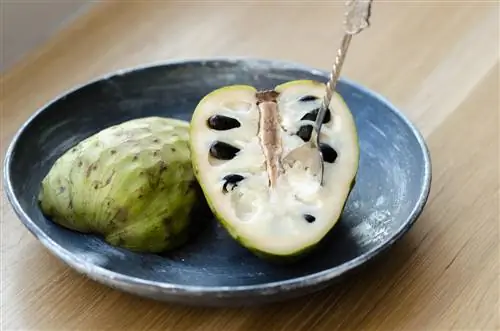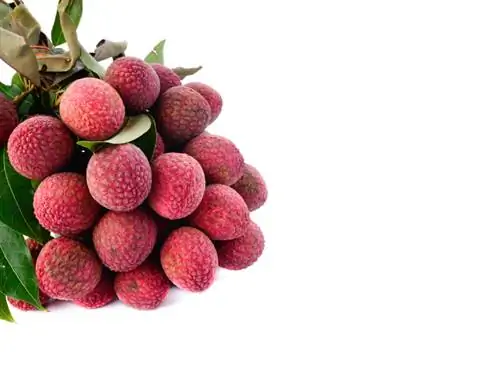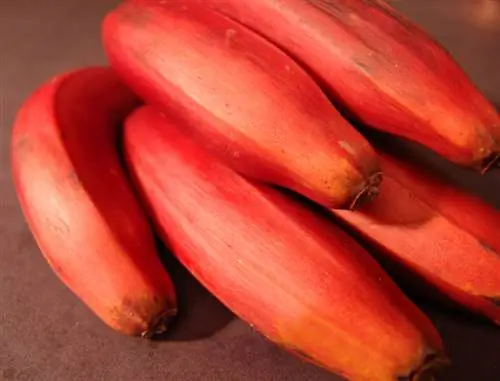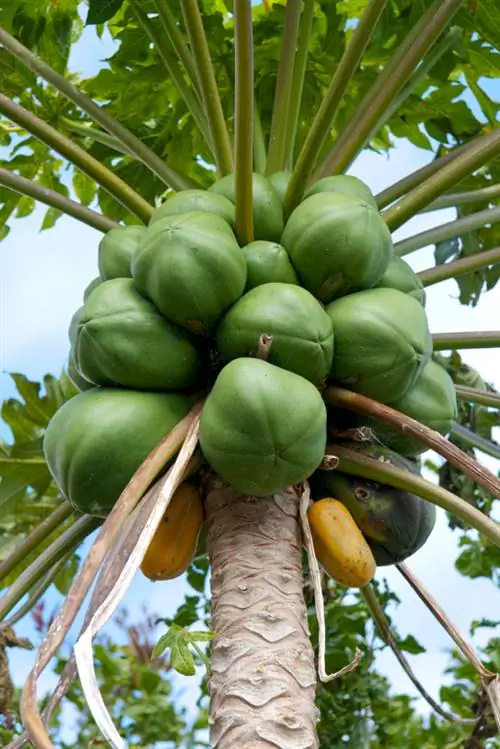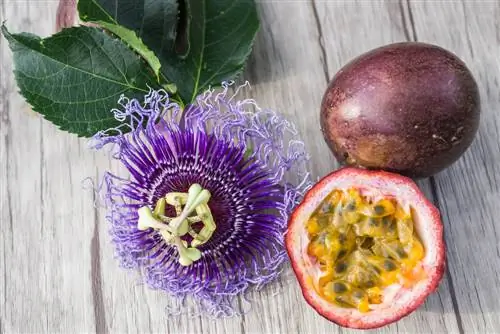- Author admin [email protected].
- Public 2023-12-16 16:46.
- Last modified 2025-01-23 11:22.
Exotic fruits have long since found their way into our fruit basket. However, cherimoya is still relatively unknown - but delicious and very he althy. We explain everything you need to know about the fruit, which is also called the sugar apple.
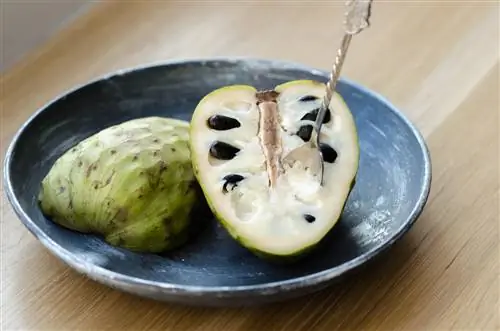
What does Cherimoya look like?
The first thing you notice is the peculiar shape of the cherimoya, which is at least vaguely reminiscent of a heart. The fruits have agreen, scale-like peelthat is quite thick but soft. Thefleshof Cherimoya iscream coloredand containsblack seeds
What do cherimoya fruits taste like?
The fruits, which are in season from September to February, impress when ripe with theirslightly sweet, very fine aroma. The taste is reminiscent of a mixture of pineapple, banana, pear and raspberry. When you eat it you can also taste a hint of cinnamon.
Why is cherimoya so he althy?
The 7 to 14 cm long fruits contain around 63 calories per 100 gmany nutrientssuch as calcium, phosphorus, copper, magnesium and potassium. TheVitamins A, B1, B2, B6, C and E as well as lots of fiber are also contained in the tasty pulp. However, diabetics should be careful when eating the fruit because cherimoyas have a high proportion of fructose.
How to eat cherimoya fruit?
The easiest way is to spoon theflesh out of the (also edible) peel- the cherimoya tastes particularly good iced. In addition, the fruit is ideal for preparingfruit salads, exotic dessertsandmixed drinksand tastes just as good with vanilla sugar as with a pinch of cardamom. If you want to combine savory and sweet, you can serve the cherimoya with smoked ham. Cherimoya seeds are inedible and even poisonous. They are removed before consumption.
Where does Cherimoya come from?
The fruit originally comesfrom the Andes, more precisely from the countries of Ecuador and Peru. But it is also grown in Mexico, Brazil, Chile and California. Other Cherimoya growing countries are Spain and Israel, and more rarely Italy. A large proportion of the fruit that comes onto the German market comes from these two countries. Due to the shorter transport route, purchasing these cherimoyas is recommended for reasons of sustainability.
How is Cherimoya grown?
The Cherimoya grows onevergreen, shrub-like trees that can grow up to ten meters high. Due to its origins, it loves it warm and cannot tolerate frost. Nevertheless, with a little skill and the necessary care, cherimoyas can also be grown in Germany: To do this, you plant the seeds from the pulp in a pot with permeable soil. Alternatively, cherimoya plants are available from specialist retailers.
Tip
Getting the right ripening time
Since the Cherimoya fruits have a long transport route before they reach our store, they are harvested unripe. After purchase, they can be stored unrefrigerated for a maximum of ten days before processing. To ripen, the fruits are wrapped in paper at home. The cherimoya is ripe when the peel gives way when lightly pressed.

